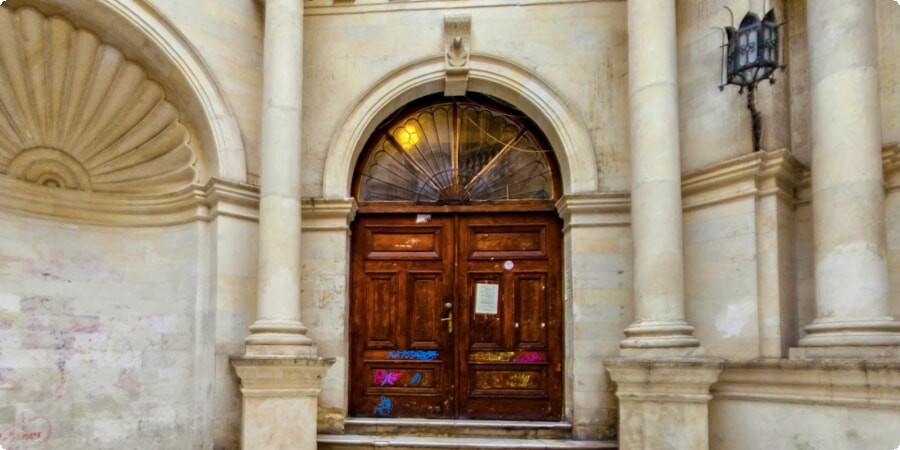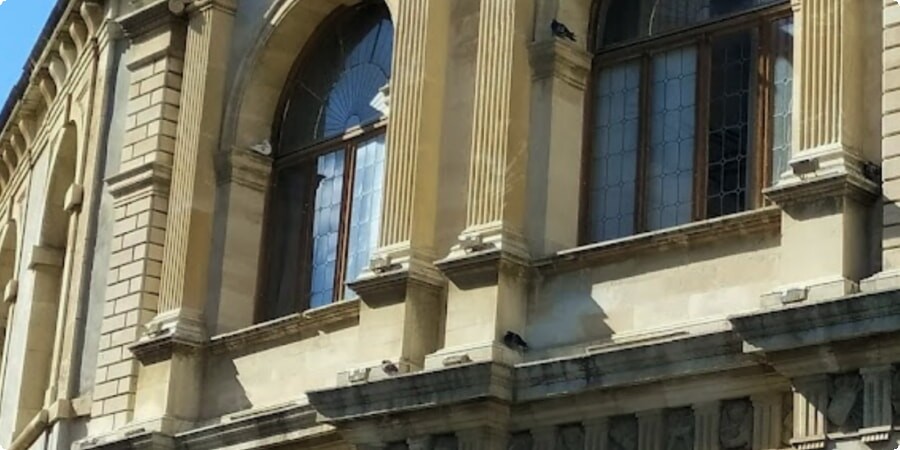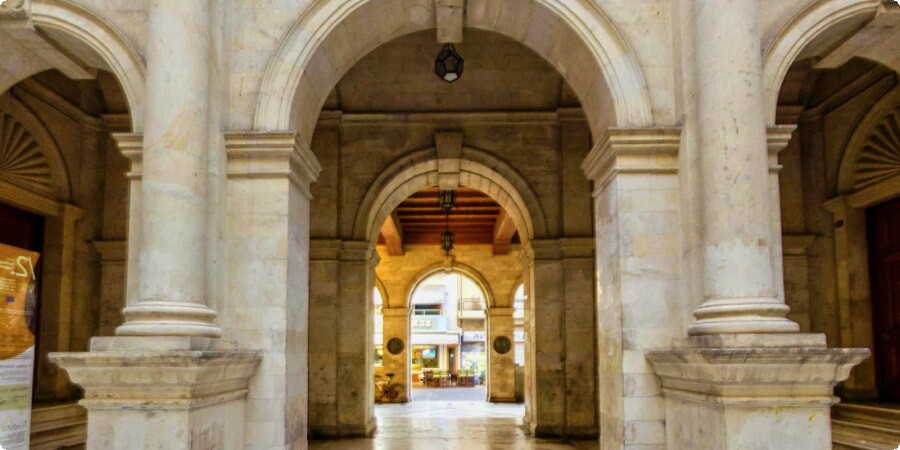Nestled amidst the bustling streets and ancient ruins of Greece, the Venetian Loggia stands as a timeless testament to architectural elegance and historical significance. This majestic structure, with its graceful arches and intricate detailing, has captured the imagination of visitors for centuries, offering a glimpse into the rich tapestry of Greek history and culture.
History and Origins of the Venetian Loggia
To truly appreciate the beauty of the Venetian Loggia, one must delve into its fascinating history and origins. The loggia, a term derived from the Italian word "loggia" meaning a covered exterior gallery or arcade, was originally built during the Venetian occupation of Greece in the 15th century.
Constructed as a gathering place for Venetian nobility and officials, the loggia served as a symbol of Venetian power and prestige in the region. Its prime location in the heart of the city made it a hub of social and political activity, where important meetings, ceremonies, and celebrations took place.
Over the centuries, the Venetian Loggia underwent several renovations and alterations, reflecting the changing architectural tastes and cultural influences of the time. Despite these transformations, the loggia has retained its distinctive Venetian character, with its elegant facade and imposing presence continuing to captivate visitors to this day.

Architectural Features: Exploring the Design of the Venetian Loggia
The architectural beauty of the Venetian Loggia is a sight to behold, with its harmonious blend of Venetian and Renaissance styles. The loggia's facade features a series of graceful arches supported by sturdy columns, creating a sense of grandeur and symmetry that is characteristic of Venetian architecture.
At the center of the loggia's facade is a magnificent portico adorned with intricate carvings and decorative motifs, showcasing the skill and craftsmanship of the artisans who built it. Above the portico, a row of elegant windows allows light to filter into the interior, illuminating the loggia's spacious halls and galleries.
Inside, the loggia boasts a stunning vaulted ceiling adorned with colorful frescoes depicting scenes from Greek mythology and history. These masterful paintings add to the loggia's sense of grandeur and majesty, transporting visitors to a bygone era of artistic splendor and cultural richness.
To fully appreciate the architectural marvels of the Venetian Loggia and explore the surrounding area at your own pace, consider booking a car through BookingAutos.com. With convenient pickup locations at Athens Airport, BookingAutos.com offers a wide range of vehicles to suit your travel needs, ensuring a seamless and memorable journey to this iconic landmark.
Cultural Significance: The Role of the Venetian Loggia in Greek History
The Venetian Loggia holds a significant place in Greek history, serving as a symbol of cultural exchange and political influence during the Venetian occupation of Greece. Beyond its architectural grandeur, the loggia played a pivotal role in shaping the social and economic landscape of the region, serving as a meeting place for Venetian officials, merchants, and dignitaries.
As a center of Venetian power and prestige, the loggia was the site of important diplomatic negotiations, trade agreements, and public ceremonies. Its imposing facade and opulent interiors reflected the wealth and sophistication of the Venetian Republic, leaving an indelible mark on the cultural identity of Greece.

Despite the end of Venetian rule in Greece, the Venetian Loggia remains a cherished symbol of the region's rich cultural heritage, serving as a reminder of the enduring legacy of Venetian influence in Greek society.
Restoration and Preservation Efforts
Over the years, extensive restoration and preservation efforts have been undertaken to ensure the longevity of the Venetian Loggia and safeguard its architectural heritage for future generations. Skilled craftsmen and conservationists work tirelessly to repair and maintain the loggia's aging infrastructure, using traditional methods and materials to preserve its original character and charm.
Additionally, educational programs and public outreach initiatives raise awareness about the importance of preserving the loggia's historical and cultural significance among local residents and visitors alike. By fostering a sense of stewardship and pride in the loggia's heritage, these efforts ensure that it remains a cherished landmark in the heart of the city.
Thanks to these preservation efforts, the Venetian Loggia continues to stand as a testament to the enduring beauty and historical significance of Greek architecture, inspiring awe and admiration in all who behold it.
Visitor Experience: What to Expect When Visiting the Venetian Loggia
Visiting the Venetian Loggia is a journey back in time to an era of opulence and sophistication. As you approach the loggia's majestic facade, you are greeted by the sight of its graceful arches and intricate carvings, hinting at the architectural marvels that lie within.
Inside, the loggia's spacious halls and galleries invite exploration, with each room offering a glimpse into the region's rich history and cultural heritage. Visitors can admire the loggia's stunning frescoes, intricate woodwork, and ornate furnishings, marveling at the craftsmanship and artistry of centuries past.

To make the most of your visit to Greece and explore the country's cultural treasures, consider booking a car through BookingAutos.com. With a wide selection of vehicles and convenient pickup locations throughout Greece, BookingAutos.com offers a seamless and flexible way to discover the beauty of the Venetian Loggia and other historic landmarks in the region.
Influence on Modern Architecture
The Venetian Loggia's influence extends beyond its historical significance, shaping the landscape of modern architecture in Greece and beyond. Architects and designers draw inspiration from the loggia's elegant proportions, graceful arches, and intricate detailing, incorporating elements of Venetian style into contemporary buildings and urban spaces.
The loggia's timeless beauty serves as a reminder of the enduring appeal of classical architecture, inspiring new generations of architects to embrace tradition while pushing the boundaries of innovation. Whether in the design of public buildings, private residences, or urban developments, the legacy of the Venetian Loggia continues to resonate in the architectural fabric of Greece and beyond.
Symbolism and Legacy of the Venetian Loggia
As a symbol of cultural exchange and architectural excellence, the Venetian Loggia holds a special place in the hearts of Greeks and visitors alike. Its graceful silhouette and storied history evoke a sense of pride and admiration, reminding us of the enduring legacy of Venetian influence in Greek society.

Beyond its physical presence, the loggia embodies the spirit of collaboration and cooperation that defined the Venetian Republic, serving as a testament to the power of cultural exchange and artistic expression. Its legacy lives on in the hearts and minds of all who are captivated by its beauty and significance.
Recommendations and Further Exploration
For those inspired by the beauty and history of the Venetian Loggia, there is much more to explore in the vibrant city of Athens and beyond. From ancient ruins to modern marvels, Greece offers a wealth of cultural treasures waiting to be discovered.
As you continue your journey through Greece, consider booking a car through BookingAutos.com to explore the country's scenic landscapes, historic landmarks, and hidden gems. With convenient pickup locations and a wide selection of vehicles to choose from, BookingAutos.com offers a flexible and convenient way to discover the beauty of Greece at your own pace.
As you venture forth on your exploration, may the memories of the Venetian Loggia linger in your heart, serving as a reminder of the enduring beauty and cultural richness of Greece.